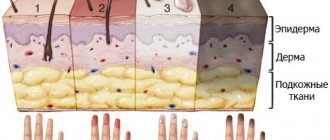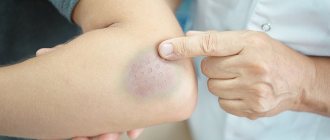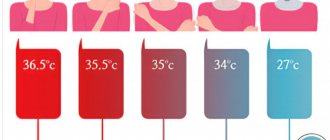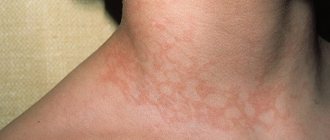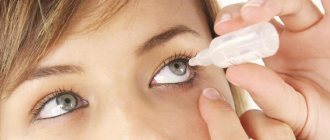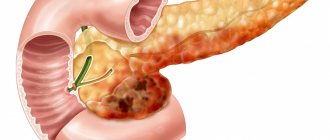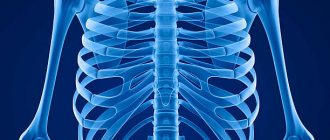Frostbite and general hypothermia. First aid.
A real northern winter has arrived in the Arkhangelsk region. It's bitterly cold outside, and there's still a whole month of winter ahead, snowy and windy. It is believed that only extremely low temperatures can lead to hypothermia and frostbite, but they can also occur at +4+5 degrees. How to protect yourself from frostbite, hypothermia and how to properly provide first aid to a person suffering from frost, we asked Nikolai Grigorievich Zemtsovsky, a paramedic of the mobile emergency medical team of the State Budgetary Healthcare Institution JSC AOKSSMP Solombala substation.
First of all, protruding and insufficiently protected parts of the body are exposed to aggressive influence: ears, nose, cheeks, hands, feet. Subsequently, general hypothermia of the body develops with a decrease in body temperature to critical levels.
Contrary to popular belief, cold causes only one disease - hypothermia or frostbite. Low temperatures weaken our immunity, as a result of which bacteria and viruses are activated, which are the true cause of various diseases (ARVI, flu, sinusitis, tonsillitis, pneumonia, cystitis, etc.)
What is hypothermia?
Hypothermia (hypothermia) is a condition that occurs when a person’s body temperature drops below its normal value (36.6ºC). In this case, the body gives off more heat than it can produce.
Symptoms of hypothermia: the nasolabial triangle acquires a bluish tint, the skin turns pale, the pulse quickens, and chills begin. At the same time, a person may feel a surge of strength. If it is not warmed up in time, the second stage of hypothermia sets in - drowsiness, apathy, weakness. Breathing and heartbeat slow and may eventually stop altogether. If a person is hypothermic, it is necessary to bring him to a warm room, remove him from clothes - they retain the cold, give him hot sweet tea and call a doctor.
First aid for hypothermia:
- Eliminating contact with the cold - this must be done first to avoid worsening hypothermia. It is necessary to help the person get into a dry, heated and closed room so that external environmental factors no longer have a negative impact on the victim. After the person is warm, all wet and cold clothes, including underwear, are removed from him, after which he is allowed to change into dry clothes. If the victim is unconscious, it is necessary to call an ambulance and assess vital signs (pulse, breathing, blood pressure). If they are absent, immediately begin cardiopulmonary resuscitation until the medical team arrives.
- Warm drink. The victim must be given a warm liquid to drink, from 0.5 to 1 liter. This can be tea, compote, rich broth, the temperature of which should not exceed 50-55 degrees. The use of alcoholic beverages is prohibited due to their negative effects on the body - alcohol dilates blood vessels, which leads to an acceleration of the process of hypothermia (heat loss).
- Warming massage. Hypothermated parts of the body must be carefully and thoroughly massaged, making translational and rotational movements with the palms of the victim’s skin. Just don’t overdo it - too much pressure can worsen the functioning of peripheral vessels and increase pain.
- Thermal insulation and bed rest. The patient should be wrapped in a thick cotton blanket and then put to bed for 10-12 hours.
If a person falls into water far from populated areas in winter, he should be undressed, wiped dry and dressed in different clothes. If there is no spare clothing, then you need to dry the existing things by the fire, without allowing the victim to freeze.
What is frostbite?
Frostbite (frostbite) is damage to body tissues caused by exposure to low temperatures. Extreme frostbite can lead to tissue death, which ends in limb amputation.
Degrees and symptoms of frostbite:
Depending on the duration and intensity of the aggressive effects of cold, as well as on the nature of tissue damage, 4 degrees of frostbite are distinguished. The initial manifestations are similar in all cases (which does not allow us to reliably determine the degree of frostbite in the first hours after the injury):
- pallor and coldness of the skin;
- decreased sensitivity.
After the appearance of the first general symptoms, symptoms specific to each degree of frostbite develop:
1st degree. It is characterized by mild soreness of the skin; after warming, intense redness and slight swelling are noted; peeling of the affected areas is possible without the development of necrosis. After 5-7 days, skin manifestations completely disappear.
2nd degree. Within 24-48 hours, blisters of various sizes appear on damaged areas of the skin, filled with transparent (serous) contents. The pain is intense, characterized by itching and burning of the injured skin. With proper treatment, the skin condition is restored within 7-14 days, and there are no scar deformities at the site of the lesion.
3rd degree. Necrosis of the damaged skin occurs, which leads to loss of sensitivity and the formation, after warming, of massive painful blisters with a purplish-bluish base, filled with bloody contents. Subsequently, the blisters necrotize and are rejected with the formation of scars and granulations. Scarring can last up to a month, and rejection of the nail plates also occurs, sometimes irreversibly.
4th degree. It manifests itself as total necrosis of not only the skin, but also the underlying soft tissues (up to the bones and joints). The injured areas of the skin are cyanotic, after warming a sharply increasing swelling forms, there are no blisters, the sensitivity of the skin is not restored after warming, and gangrene subsequently develops. The affected areas are subject to amputation.
With prolonged exposure to low temperatures, general hypothermia is possible, as evidenced by a decrease in body temperature to 34 ºC or lower (up to 29-30 ºC in severe cases). Depending on the severity, the condition manifests itself as depression of the respiratory, cardiovascular and nervous systems of varying intensity, up to coma and death.
First aid for frostbite:
In case of damage of any intensity, it is first necessary to deliver the victim to a warm room as soon as possible. If there is a possibility of re-frostbite, the damaged part of the body should not be allowed to thaw; otherwise, you should cover it carefully. Further measures depend on the degree of frostbite.
For frostbite of the first degree you need:
- warm the affected areas of the skin (by breathing, gentle rubbing with a soft woolen cloth or hands);
- Apply a warming cotton-gauze bandage in several layers.
For frostbite of II–IV degree you need:
- exclude rapid warming (massage, rubbing);
- apply a heat-insulating bandage (bandage and cotton wool in several layers, you can use scarves, woolen fabric, shawls);
- fix the frostbitten limb;
- Call an emergency medical team.
What is strictly forbidden to do if you have frostbite:
- rub the frostbitten surface with snow or hard cloth (there is a high probability of injury and subsequent infection of the damaged skin);
- expose the frostbite site to intense heat (using a hot bath, heating pad, heater, etc.);
- rub damaged skin with oil, fat, alcohol, as this can complicate the course of the disease;
— independently open the blisters and remove necrotic tissue.
To stay healthy in winter, you must follow these basic recommendations:
- The right clothes . To stay warm, dress in layers. Don't forget to wear a scarf, warm socks, mittens and shoes with thick, comfortable soles. Narrow, tight shoes increase the likelihood of frostbite. Even if you are going to travel by car, you should take care of warm clothes. A car breakdown can happen at the most inopportune moment, and the wait for help can last for many hours.
- Activity . When you are outside in frosty weather, you need to spend time actively. Lack of movement in the cold can lead to hypothermia and frostbite.
- Avoid alcohol. Warm yourself up with hot tea. When drinking alcohol, a person may incorrectly assess the situation and temperature outside. Therefore, most often people who are intoxicated suffer from frost.
- Eat nutritiously and healthily. There is an opinion that in the winter season, heavy, fatty foods and fried foods help keep you warm. According to doctors, this approach to eating will not help you stay warm. Such a diet can harm the body. Include in your diet foods rich in both fats and proteins, but easier to digest: meat, legumes, dairy products. Instead of frying meat, it is better to bake or boil it.
- Avoid metal jewelry. Piercings, rings, earrings can play a cruel joke on you. Contact of skin with metal products can result in frostbite.
A special risk group is children and the elderly. In severe frosts, it is better for them to stay at home and strictly control the duration of their stay outside. In children, thermoregulation is not fully formed, and in older people it is often impaired.
Every year, tens of thousands of people around the world suffer and even die from hypothermia and frostbite. Residents of northern regions need to know the signs of hypothermia and frostbite, and also be able to provide first aid in such situations.
Take care of yourself!
Arkhangelsk Center for Medical Prevention
Share link:
2. Symptoms of hypothermia
The first symptoms of hypothermia
can be:
- Trembling in the body;
- Cool, pale or blue-gray skin;
- Apathy;
- Thinking disorder;
- Slight unsteadiness in gait;
- Slurred speech;
- Fingers and hands cannot cope with any work.
Late symptoms of hypothermia
that appear with increasing exposure to cold and low temperatures are:
- Body cold to the touch;
- Muscle stiffness;
- Slow pulse;
- Slow breathing;
- Weakness and drowsiness;
- Confusion;
- Loss of consciousness;
- The disappearance of trembling in the body if its temperature drops below 32 ° C.
Visit our Therapy page
What are the signs of frostbite?
The first signs of frostbite are easy to miss. The skin temperature drops, it becomes pale, loses sensitivity, but a tingling or burning sensation may be felt. While a person is in the cold, it is very difficult to determine the extent of damage. It is determined after warming.
If the skin becomes warmer when warmed, and sensitivity is restored, this means that the cold injury is superficial. Pain and lack of sensitivity are characteristic of deep frostbite.
Based on the depth of injury, injuries are divided into four types. The first two are classified as superficial, the rest - deep. First degree frostbite affects the superficial layers of the skin. After warming up, pale skin may turn red or even become bluish, and after a while it may peel off. Within a week her condition returns to normal.
With a second-degree injury, blisters filled with fluid, most often light, form on the skin. After about a week they subside, and after another two to three weeks the skin is completely restored.
In the third degree, the blisters are often filled with pink or red liquid, and their bottom is blue-purple. After the dead tissue is sloughed off, wounds are formed. With the fourth degree of frostbite, the affected part of the body swells sharply, becomes dark, and gangrene may develop.
Frostbite: main risks
Most often, the feet suffer from cold, followed by the hands, followed by the nose, ears and cheeks. The body loses heat faster in cold water, or if a person is wearing wet clothes or shoes. The risk of frostbite is higher in strong winds and snowstorms, as well as in those who wear tight shoes or do not change body position for a long time. Vascular diseases, neuritis, previous frostbite, fatigue, exhaustion, hunger, and past infectious diseases also contribute to cold injury. People often get frostbite while intoxicated.
